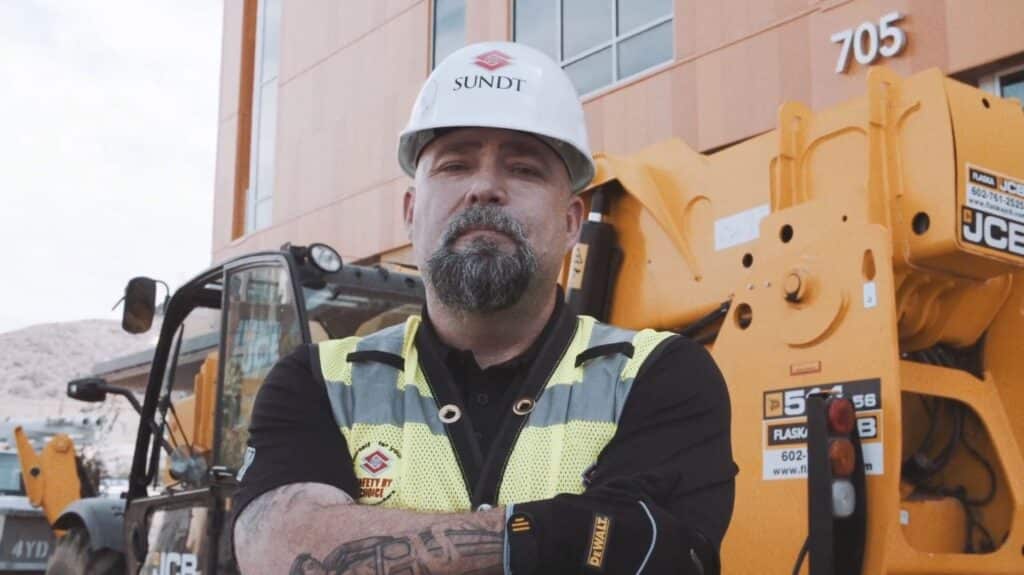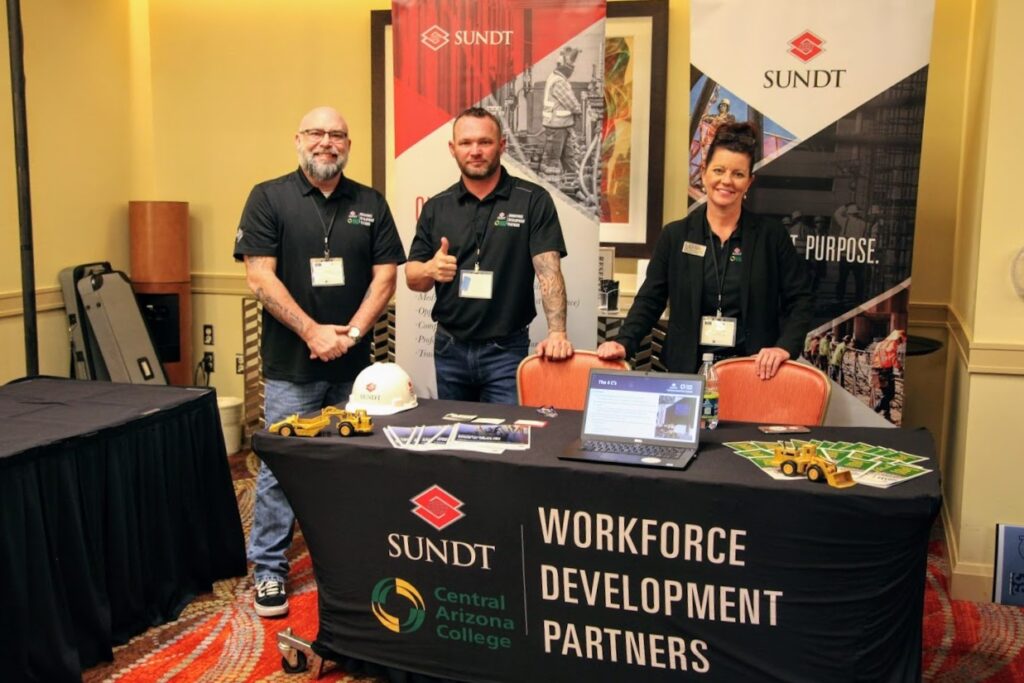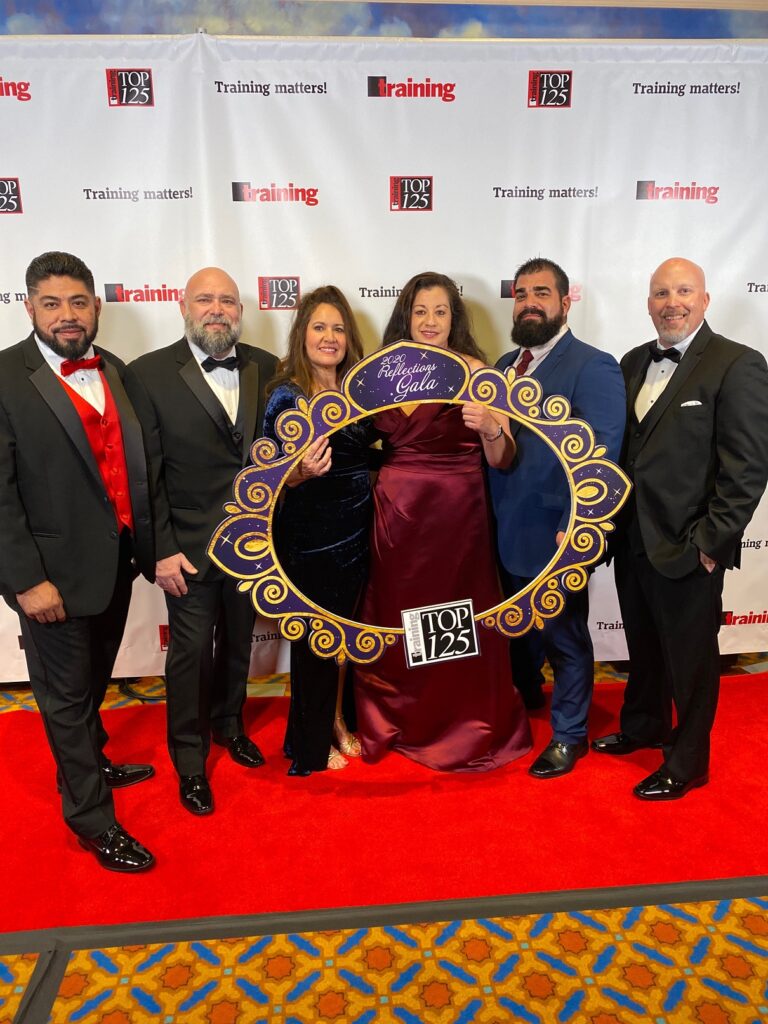The National Center for Construction Education and Research (NCCER) is working to give every craft professional the chance to learn, prove their skills, and earn industry-respected credentials. At the heart of this effort is Sean Ray, Director of Craft Workforce Development for Sundt Construction. Sean was recently named Vice-Chairman of NCCER’s National Workforce Development Committee. He spoke with us this week about what this new responsibility looks like and what our current era demands for building a skilled workforce.

Sean, first of all, congrats on being named Vice-Chairman of the NCCER Workforce Development Committee. How were you selected for this position, and what will you be working on in the next couple years?
Thanks! Back in December, some of my colleagues in NCCER’s leadership encouraged me to throw my hat in the ring. They’ve known me through my involvement in NCCER over the years, and they’re familiar with Sundt’s work with Central Arizona College and the Build Your Future AZ campaign. People may not realize it, but Sundt is known coast to coast for what we’re doing with our training programs. So, I applied, they voted, and to my surprise, I was named Vice-Chairman. We just had our first official meeting as a committee last week, and it was really cool.
For workforce development, NCCER has three main stakeholders: contractors, associations such as the AGC, and then high school and college trades programs. We all have different ideas on how to build a workforce, but we’re finding ways to learn from each other. I’m working with companies like Kiewit, McCarthy, and KBR to learn and share best practices. NCCER is a hub for the best ideas. There’s no ego with this; it’s not a competition. And we have people from Delaware to Florida to Arizona working together. That’s what makes this special.
In some ways, construction in the Southwest is still recovering from the last recession as we enter new challenges with COVID-19. How have NCCER and Sundt helped our industry to rebuild skills-wise, and what lessons have we learned to help us move forward?
Consistency is key. A big part of having a skilled workforce is having standardized curriculum. In the hiring process, seeing someone’s NCCER credits tells us they know their stuff. But it wasn’t always like that; a decade ago NCCER had a strong presence in the East, South and Midwest, but not in Arizona. A lot of people left the industry here because of the recession, and high schools and community colleges shut down Career and Technical Education (CTE) programs. So, when we had new demand for skilled workers, they just weren’t out there, and the industry really suffered.
But six years ago, we started working with the Arizona Department of Education—I also serve on their board for CTE. We were able to get NCCER’s material approved as on of the state’s approved curricula. Since then, Arizona has made big steps toward embracing a standardized approach across schools. On the industry side, Sundt has taken the lead in using NCCER standards to spearhead Arizona’s craft workforce development, certifying workers and trainers across the state, including many from other contractors. And this laid the foundation for our work with Central Arizona College (CAC).

On that subject, Sundt’s partnership with CAC has been recognized industry-wide as a model that really works, and it’s now being replicated in North Texas and possibly other states. Why has it been so successful?
The biggest benefit is the financial side. At Sundt, we have two routes for new hires; the traditional route starts with new people who have little to no experience, and we have to vet them, train them up, onboard them, etc. And then some will just back out when it gets hot in the summer. This all costs money.
The CAC route, you have students who’ve invested their own money. The program works like a true jobsite; they’re doing 20% in-class and 80% hands-on, and they’ve already worked out in the heat. And the best part: they’re committed. They’re not journeyman-level quite yet, but they already have one to two years of solid training when they enter the workforce.
There’s also value to the college, whose program has grown exponentially, and most of all, there’s value to the students—they’re getting high-demand skills and receiving three to four job offers a month before they even graduate.

With campuses being closed due to COVID-19, I imagine the CAC program will take a little time before it’s fully operational again. But how has social distancing affected the way Sundt performs in-house craft training?
It’s a challenge, but we’re adapting. A struggle with craft training is all of the hands-on components, which are critical. Our apprenticeships are currently on hold. However, we’ve purchased GoPro cameras and wireless mics and stands, and we’re starting to film all of the performance profiles for NCCER.
If people can’t come to us to learn, we can come to them via online training. For pipefitting, for example, we can use video to go step-by-step: here’s how you set your dies, set the machine, and so on. The idea here is not just to train our people, but to provide a resource for the community as well. If high school or community college instructors, or even students on their own, want to use our videos, we welcome that.
This season has been hard on a lot of people. And things are going to look different afterwards. However, there’s an opportunity right now to grow, and to become more flexible. We’re creating more options for how and where we train, and I think that’s a good change. No matter what happens, our communities will still need buildings and infrastructure to function. So, we’re trying to build a skilled workforce any way we can—we can’t let this slow us down.